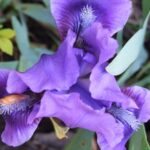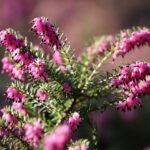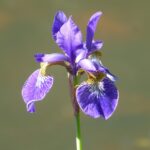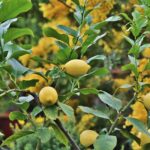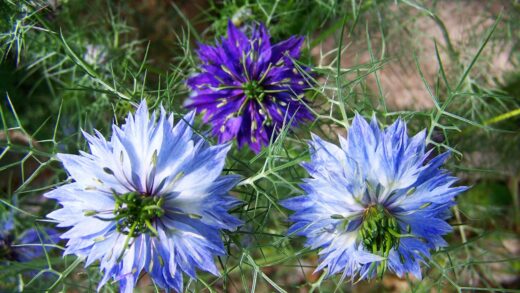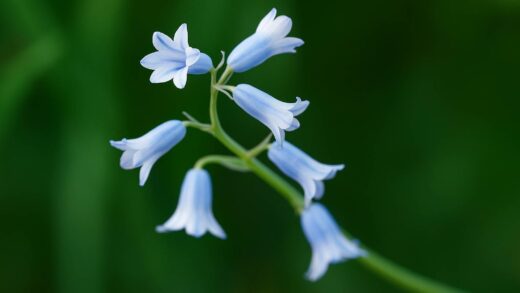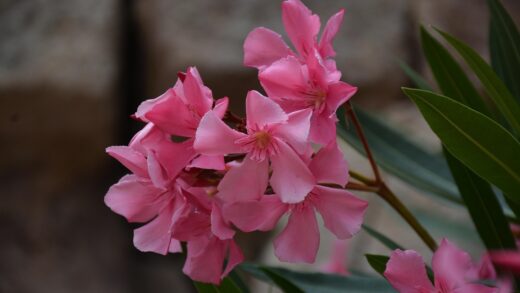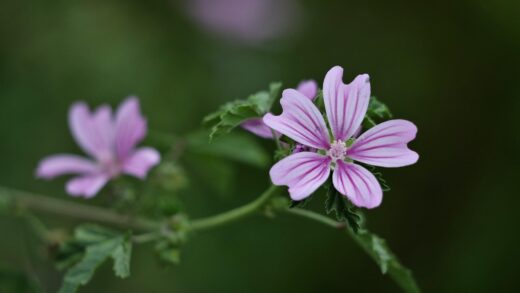Pruning is an essential horticultural practice for managing the growth, shape, and health of the trifoliate orange. This vigorous plant has a natural tendency to develop into a dense, chaotic, and heavily armed thicket if left to its own devices. While this untamed form can be useful for creating an impenetrable barrier, some degree of pruning is usually necessary to maintain the plant within its allotted space and to enhance its ornamental qualities. The process of pruning involves the selective removal of branches to achieve specific goals, whether it’s to create a more tree-like form, maintain a formal hedge, or simply improve the overall structure and vitality of the specimen.
The timing of pruning is a critical factor that influences the plant’s flowering and fruiting display. The trifoliate orange produces its fragrant flowers in early spring on the woody stems that grew during the previous year. Therefore, performing major structural pruning in late winter or early spring, before new growth begins, allows the gardener to shape the plant without sacrificing the current season’s blossoms. Any pruning done after the flowers have faded should be more restrained to avoid removing the developing fruit. Understanding this relationship between pruning time and the plant’s life cycle is key to balancing aesthetic goals with the desire for its unique fruit.
The tools used for pruning this formidable plant are an important consideration. Due to the trifoliate orange’s exceptionally sharp and sturdy thorns, personal protective equipment is not optional. Thick, puncture-resistant gloves, sturdy long-sleeved clothing, and protective eyewear are essential to prevent injury. Sharp, clean tools, such as bypass pruners for smaller stems, loppers for larger branches, and a pruning saw for major limbs, will ensure clean cuts that heal quickly. Using dull tools can crush stems and create ragged wounds that are more susceptible to disease.
Ultimately, the approach to pruning will depend on the gardener’s specific goals for the plant. Whether the aim is a neatly manicured hedge, a sculptural specimen tree, or simply a healthier and more manageable shrub, a thoughtful pruning strategy is the way to achieve it. Regular, light pruning is often more effective and less stressful for the plant than infrequent, severe cutting back. By working with the plant’s natural growth habits, a gardener can shape and maintain a trifoliate orange that is both beautiful and well-behaved.
Objectives of pruning
The primary reason for pruning a trifoliate orange is to maintain its health. This involves the removal of any wood that is dead, damaged, or showing signs of disease. This type of pruning, often called sanitary pruning, can be done at any time of year whenever a problem is noticed. Dead branches serve no purpose and can provide a home for insects or pathogens, while damaged limbs create entry points for disease. By promptly removing this compromised wood, the gardener helps to keep the plant healthy and directs its energy towards productive, living growth.
More articles on this topic
A second major objective is to control the size and shape of the plant. The trifoliate orange is a vigorous grower that can easily become overgrown, overwhelming its neighbors and encroaching on paths or buildings. Regular pruning is necessary to keep it within its designated boundaries. This may involve reducing its overall height and spread or selectively removing branches to create a more open and aesthetically pleasing form. For those growing it as a formal hedge, regular shearing is required to maintain a crisp, geometric shape.
Improving the structure and air circulation within the plant is another key goal. The trifoliate orange’s natural tendency is to produce a dense tangle of crossing and rubbing branches. This congestion can lead to wounds on the bark where branches rub against each other, creating potential entry points for disease. The dense foliage can also trap humidity, creating an environment favorable to fungal growth. By thinning out some of the interior branches, the gardener can improve light penetration and airflow through the canopy, leading to a healthier plant overall.
Finally, pruning can be used to enhance the plant’s ornamental features. For those who wish to grow the trifoliate orange as a small, single-trunked tree, pruning is essential for establishing a clear leader and removing the lower branches. This showcases the attractive, contorted structure of the trunk and main limbs, especially in winter. Pruning can also be used to remove basal suckers or watersprouts—vigorous, unbranched shoots—that detract from the plant’s desired form and divert energy from the main framework.
Best time for pruning
The timing of pruning activities for the trifoliate orange should be carefully synchronized with its annual growth cycle to achieve the best results. The ideal time for major structural pruning and renovation is in the late winter or very early spring, while the plant is still dormant. Pruning during this period offers several advantages. Without leaves, the branch structure is fully visible, making it much easier to identify and remove crossing branches, weak limbs, and to make decisions about the overall shape of the plant.
More articles on this topic
Performing cuts during the dormant season also minimizes the stress on the plant. Since its metabolic processes are slowed, the plant loses less sap from the pruning wounds. Furthermore, as spring arrives, the plant’s energy is directed towards a vigorous flush of new growth, which allows the pruning cuts to heal quickly. This rapid healing, known as compartmentalization, seals off the wounded tissue and reduces the risk of insects or diseases entering the plant through the cuts.
While major pruning is best left for the dormant season, light trimming and shaping can be done at other times of the year. If the plant is being grown as a formal hedge, it will require shearing several times during the growing season to maintain its neat appearance. The first shearing is typically done after the spring flowering has finished. This timing allows for the enjoyment of the floral display before shaping the plant. Subsequent light trims may be needed through the summer to keep the hedge tidy.
It is crucial to understand that the trifoliate orange flowers on old wood, meaning the flower buds for the spring display are formed on the branches during the previous summer and autumn. Therefore, any pruning done in late summer, autumn, or winter will remove some of these dormant flower buds, potentially reducing the number of flowers and subsequent fruit. This is why major structural pruning is best done immediately before spring growth, striking a balance between shaping the plant and preserving its flowering potential.
Pruning techniques for different forms
If the goal is to grow the trifoliate orange as a dense, informal shrub, the pruning approach should be minimal and focused on health and maintenance. The main task is to thin out the interior of the plant every few years during the dormant season. This involves selectively removing some of the oldest, thickest stems right down to the base. This practice, known as renewal pruning, encourages the growth of new, vigorous shoots from the ground, keeping the shrub from becoming a congested thicket of old, less productive wood. Any dead or crossing branches should also be removed.
To maintain a trifoliate orange as a formal, clipped hedge, a more intensive pruning regimen is required. After the initial spring flowering, the hedge should be sheared to the desired shape using hedge trimmers. It is important to shape the hedge so that it is slightly wider at the base than at the top. This “A-frame” shape ensures that the lower branches receive adequate sunlight and remain full and leafy; a hedge that is wider at the top will shade out its own base, leading to bare, woody stems at the bottom. The hedge will likely need several light shearings throughout the summer to maintain its sharp lines.
Creating a single-stemmed, tree-form specimen requires dedicated training from a young age. Select the strongest, straightest, most central stem to be the main trunk or “leader.” Prune off any competing leaders and remove any branches that are growing on the lower portion of the selected trunk, gradually raising the canopy over a few years. This process, known as “limbing up,” creates the classic tree shape. As the tree matures, the focus will shift to maintaining the clear trunk by removing any new low-growing branches or suckers that emerge.
Regardless of the desired form, all pruning cuts should be made correctly. For removing small branches, cut back to just outside the branch collar, which is the slightly swollen area where the branch joins the trunk or a larger limb. Do not leave a long stub, and do not make a flush cut that removes the collar, as this area contains the specialized cells needed for proper wound healing. For larger branches, use the three-cut method to prevent the weight of the branch from tearing the bark down the side of the trunk.
Dealing with thorns and suckers
The formidable thorns of the trifoliate orange are one of its most defining features and require special attention during any pruning or maintenance activities. These thorns are modified branches, and they are extremely sharp, strong, and can be several inches long. Failure to take proper precautions will almost certainly result in painful scratches and punctures. It is absolutely essential to wear heavy-duty, puncture-resistant gloves, preferably gauntlet-style gloves that also protect the forearms. Safety glasses or goggles are also crucial to protect the eyes from whipping branches and sharp points.
When pruning, it is often helpful to start from the outside of the plant and work your way in, carefully removing small sections at a time. This methodical approach allows you to create a safe working space and reduces the risk of becoming entangled in the thorny branches. Using long-handled tools like loppers or pole pruners can also help to maintain a safe distance from the thorns. Once branches are cut, they should be handled carefully. It is wise to have a sturdy wheelbarrow or tarp nearby to collect the pruned material, minimizing the number of times you need to handle the thorny cuttings.
The trifoliate orange has a tendency to produce suckers, which are vigorous shoots that arise from the root system or the very base of the trunk. These suckers are genetically part of the rootstock and should be removed, as they will grow into a thicket around the base of the plant, competing with the main structure for water and nutrients. They detract from the desired shape, especially if you are training the plant as a tree. Suckers should be pruned off as soon as they appear, cutting them as flush as possible to their point of origin on the root or trunk.
Another type of growth to manage is watersprouts. These are fast-growing, often vertical shoots that typically arise from latent buds on older branches, often in response to heavy pruning or stress. Like suckers, they are often unproductive and can disrupt the plant’s structure. They should be selectively removed during the summer or as part of the dormant season pruning. By consistently removing suckers and watersprouts, the gardener ensures that the plant’s energy is channeled into the main framework, resulting in a stronger, healthier, and more aesthetically pleasing plant.









